
Nassa: Why Cover Your Hair?
Rabbi Pinchas Winston elaborates on the “Nazir” with a beautiful explanation according to Jewish esoteric thought why a married woman must cover her hair.

Parshat Nassa
All the days of his vow to be a nazir, no razor shall go across his head until the fulfillment of the days of being a nazir. He shall be holy; the hair of his head shall grow wild (perah). (Bamidbar 6:5)
Following on the heels of the mitzvah of the Sotah is the halachah regarding the Nazir – the man or woman who vows to abstain from wine and wine-related products, and several other restrictions due to the person's changed spiritual status.
One such restriction of being a Nazir is the halachah to not take care of one's hair; it is to grow wild — just like the Sotah's hair becomes when unwrapped by the priest:
The kohen shall have the woman stand before G-d and uncover (pharah) the head of the woman (Bamidbar 5:18)
– a clear connection between the two parshios, for, in each case, the words are spelled, peh-reish-ayin. This is aside from the other important connection the Talmud makes between the Sotah and Nazir:
Why is [Tractate] Nazir [in the Book of Women]? The Tanna is basing himself upon the posuk: If she does not find favor in his eyes, because she has acted unfaithfully (Devarim 24:1). What caused her to sin? Wine! As it says: All who see the Sotah in her predicament takes an oath to abstain from wine. (Nazir 2a)
In fact, the letters peh-reish-ayin, are the basis of the word used to describe the licentiousness (or, in this context, the constraint of licentiousness; see Rashi) of those who worshipped the golden calf while Moshe was away from the camp, on top of Mt. Sinai:
Moshe saw that the people had been restrained (parah), because Aaron had restrained (paroah) them by doing only a small part of what some demanded to be done. (Shemos 32:25)
Not coincidentally, these letters are also the root letters of the word "Pharaoh" — the very symbol of immorality and sensual living from which the Jewish people were supposed to have fled! Certainly, given the emphasis Western Society places on hair care (a multi-billion dollar industry while people starve from want of basic foods in other parts of the world), and the role the appearance of hair plays in the attraction of men for women and vice versa, one can see how hair can symbolize sensuous living, and narcissist behavior, as the Talmud portrays:
Shimon HaTzaddik said: All the days of my life, I never ate from the Transgression-Offering of a Nazir who had become defiled except for one who came to me from the South. He had beautiful eyes and was pleasant to look at, and his locks were well-kept and hung down. I said to him,
"My son, what did you see that made you want to destroy such beautiful hair?"
He answered me, "I was a shepherd for my father in my city, and I went to draw water from a spring. I saw my reflection, and my yetzer hara took hold of me and wished to tear me from this world. I told him, 'Empty one! Why do you become proud in a world that is not yours, at the end of which you will become a worm, and your work will rot?! I will shave for the sake of Heaven!'."
I stood up, and kissed him on his head, and said to him, "There should be more Nazirs like you in the world!" (Nazir 4b)
I stood up, and kissed him on his head, and said to him, "There should be more Nazirs like you in the world!" (Nazir 4b)
In fact, the following Talmudic source spells out just how much this is so by revealing the role of a married woman's hair covering:
Ten curses came to Chava [for eating from the Tree of Knowledge of Good and Evil] She must cover like one in mourning (Rashi: It will be embarrassing to go out with her hair uncovered) (Eiruvin 100b)
Why would the sin of eating from the Tree of Knowledge of Good and Evil necessitate such a response from G-d? Because, as the following Talmudic passage reveals, the calm and orderliness of Chava's hair was part and parcel of Woman's creation, and G-d's gift to the first wife of history:
G-d caused a deep sleep to fall upon the man, and he slept. He then took one of his ribs, and after, closed the flesh in its place. G-d built (vayivein) the rib into a woman, and He brought her to the man. (Bereishis 2:20-22)
Rebi Shimon ben Menasi elucidated: Why does it say, "vayivein" ("and He built," as opposed to the normal "vayitzar," "and He formed")? We learn from this that The Holy One, Blessed is He, braided Chava's [hair], and then brought her to Adam. (Brochos 61a)
Hence, we learn, that the status of a woman's hair changes at the time she is married to her zivug, her soul-mate. The "reigning in" of her hair symbolizes the discipline she brings to herself and to her family upon making the commitment to a single male. And through this, we shall see, she brings blessing to herself, her husband, and her entire family, even affecting the uprightness of her descendants!
For, the word "yivein" is also in common with the word "binah," or "understanding," referring here to the woman's "Binah Yesayrah" — the "Extra (Intuitive) Understanding" with which a woman, particularly at marriage, is endowed. She gains this extra insight to help her husband steer the family correctly across the waters of confusion of everyday life, and it is, according to this, intricately dependent upon her covering of her hair.
The only question is, why the hair, of all parts of the body? It is the least attached (you can pull out plenty without major consequence to your health)! To answer this question, and pull the whole matter together under one covering, we will have to consult the more esoteric side of Torah.
G-d said, "Let us make Man in Our image, in Our likeness" G-d cre-ated mankind in His image; He created him in the image of G-d, male and female. (Bereishis 1:26-27)
Up until this point, we have only seen sources that the covering of a married woman's hair is a Torah mitzvah, and, that it is elucidated in the Mishnah and Talmud. And, even though there are many who wish to dispute this halachah today, they must understand that they are also taking on the entire line of Torah transmitters — the greatest rabbis the Jewish people have ever produced.
Furthermore, there is a concept that, although the same mitzvos apply in all generations (except for those related to the Temple service), some prove to be more of a test for one generation than for other generations. Eretz Yisroel, and hair covering are proving to be tests of Jewish spirituality specifically in this post-war, glamour-oriented generation.
But why does a woman's hair represent so much? Like for all of Torah, the clearer, more esoteric explanation lies in the realm of Kabbalah, the ULTIMATE source of ALL Torah concepts.
As the Zohar explains, when the Torah says that man was created in the "image of G-d," it means, more precisely, in the image of the Sefiros. Sefiros are spiritual emanations, and they act like spiritual transformers to "filter" the light of G-d, so that we, the world, and our free-will can exist. Otherwise, the Torah intimates and Kabbalah explains, G-d's light would remain too pure and lofty for anything physical to exist. The ten Sefiros are in descending order:
(Ain Sof, or, G-d's light)
Keser (Crown)
Chochmah (Wisdom)
Binah (Understanding)
Chesed (Kindness)
Gevurah (Strength)
Tifferes (Beauty)
Netzach (Dominance; Eternity)
Hod (Glory)
Yesod (Foundation)
Malchus (Kingship)
According to Kabbalah, the Sefiros are arranged in the spiritual realm in a similar fashion to how man has been formed in the physical realm, and that it is to this established reality that the term "in the image of G-d" refers. This puppet-like correspondence allows creation to be spiritually, and ultimately, physically responsive to the deeds of man (e.g., when a person sins with his hands, then, it damages the part of the Sefiros that correspond to the hands, etc.). The correspondence is as follows: HEAD
Keser (Crown)
Chochmah (Wisdom)
Binah (Understanding)
UPPER BODY
Chesed (Kindness)
Gevurah (Strength)
Tifferes (Beauty)
LOWER LIMBS
Netzach (Dominance; Eternity)
Hod (Glory)
Yesod (Foundation)
EARTH
Malchus (Kingship)
I have said in one paragraph what is the subject of many central and deep books, and would require just as many to fully explain this idea. However, it suffices to set up the analogy that, just as a man's and woman's head grows hair, so, too, is there a concept of "hair" in the world of the Sefiros. And, just as hair sits on top of a man, like a crown on the holiest part of his body, his head, so, too, does hair sit on top of the uppermost sefirah — Keser — also called "Crown." In fact, its level in creation is so high, that, for the most part, we are forbidden even to make reference to it.
However, whereas human hair may serve little function other than for appearance-sake, or to keep us warm, in the Sefiros, the "hair" functions like little spiritual conduits, through which the light of G-d can begins its descent to the lower Sefiros, and, eventually, us. In other words, Sefirical hair represents the spiritual interface between a sefirah, and the one after it, a kind of spiritual interface. This is true whether we are looking at the entire, overall, general scheme of Sefiros, or, the smaller sub-systems of Sefiros that exist within each one, like between Chochmah (Wisdom) and Binah (Understanding).
I did not choose Chochmah and Binah randomly; I did so because, when dealing with the Sefiros as worlds of their own, Chochmah plays the role of the "father" ("Abba") within the system, and, "Binah" plays the role of the "mother" ("Imma") within the entire system. The six Sefiros from Chesed through Yesod are viewed as their "offspring."
Hence, in the Sefiros, Chochmah receives less distilled, more abstract light from Keser, its prime source of light, and passes it on to Binah, which receive it somewhat "filtered" by Chochmah. However, it is Binah's role to filter the light additionally, this time enough to pass it on to the children-Sefiros below, which represent the world in which WE live (six Sefiros, six days of creation, six millennia of human history).
It works no differently, or should work no differently, in the ideal human family.
It has been the role of the husband to learn and gather information necessary for the survival of society in general, and his family in particular. However, the intelligence of children usually does not permit them to relate to the knowledge of an adult in its pure form. Such knowledge, which MUST be learned by children for the sake of their futures, must be "filtered" and adapted, something usually done best by the female world.
In other words, within the family structure, the wife/mother acts as an interface between the husband and children — more than intelligent enough to understand her husband, and, perfectly capable of relating to her children on all levels. It is this way in the physical family because it is this way in the Sefirical family.
Therefore, if the analogy is carried to its logical end, then, just like the "hair" of Binah acts as the interface and medium through which to bring over the light of Chochmah (Wisdom) to the level of Binah (Understanding), so, too, does the hair of a married woman represent her connection to and willingness to receive the "light" of her husband — and ONLY her husband.
In fact, the letters of the Hebrew word for "hair" (s'ar) are the same as that for the word "gate"(sha'ar): shin-ayin-reish. As is well known in Kaballah, on the level of Binah, there is something referred to as the Nun Sha'arei Binah — The Fifty Gates of Understanding. On an exegetical level, it could be read, "The Fifty Hairs of Understanding," suggesting that, just like a gate acts as a threshold between two domains, so, too, does hair (at least when it comes to Sefiros).
In other words, every man represents a "Chochmah" that belongs to a system, or family, of its own. Likewise, every woman represents a "Binah" that also belongs to a particular sub-system of Sefiros, and the concept of a zivug ("soul-mate") is the concept of pairing up the right Chochmah with the right Binah. The covering of the woman's hair AT MARRIAGE signifies SPIRITUALLY and PHYSICALLY the special and unique connection between a specific Chochmah and Binah — husband and wife.
However, before a woman is married, she is in a position to receive wisdom from many sources, her father, her mother, teachers, some of which may be female OR MALE, and her exposed hair signifies this. However, once she is married (something, the Talmud reveals, with which G-d is directly involved; Sotah 2a), she is — theoretically at least — supposed to look to her husband as her prime source of abstract knowledge for her own personal growth and to filter to her children to build them up.
This is also why the process of marriage is called "kiddushin," which means "sanctification," as in the woman is "sanctified" to a single man (Kiddushin 2b, see the second Tosfos there).
Thus, according to Kabbalah, the covering of a married woman's hair, leaving the viewing of her hair permissible only to her husband (and, technically, her father as well), physically symbolizes her devotion to her own personal source of Chochmah. However, perhaps, more importantly, SPIRITUALLY, it solidifies the connection between herself and her husband in the Sefiros, which, understandably, can have long term and eternal ramifications; it can affect the "shalom bayis" (peace in the house) in This World, but worst, it can eternally weaken the connection to her husband in the World-to-Come!
To the extent that a married Jewish woman covers her hair, that is the extent to which it affects the spiritual bond between herself and her husband, and, as we will learn from Kimchis, her children as well.
This is why the hair of the Sotah was uncovered. Whether she actually lay with another man or not, she had allowed herself to end up in a predicament that could very well have led to such a violation of her marriage and Society. She may have enjoyed short term pleasure, but, she learns the hard way, she has damaged the long term connection to her husband in the world within which no yetzer hara operates, and, true and honest relationships are desired and enjoyed forever — if they are cultivated and preserved in This World.
It will be a time when external beauty will be a thing of the past, because inner beauty, the kind that emerges from one's commitment to values higher than one's self, will brilliantly shine. How we deal with ourselves, our appearances, and our relationships in This World is the deciding factor regarding what we will be dealt in the future world, what we will be able to enjoy FOREVER in the World-to-Come.
And, given the emphasis on physical appearance today (boy, does the yetzer hara have a strangle hold on us), clearly one's willingness to go against the tide and reign in her hair counts for a tremendous amount in Heaven — just like those who give up some material comfort to pursue the spirituality of Eretz Yisroel. At a time when the source of human dignity — man's gift of godliness — is all but destroyed, to rebuild human dignity means the world to G-d and the world He created.
In conclusion, just like you have to appreciate that there is a lot more to be said here to further clarify the issue from a Torah perspective, I appreciate that many questions will arise from what has been said, and, I will, b'ezras Hashem Yisborach, do my best to answer anyone who takes the time to write and ask.
As a concluding note, one of the most famous "hair-stories" in the Talmud is that of Kimchis, the mother who merited to have seven sons become High Priest — Kohen Gadol — during Temple times. They asked Kimchis, "What did you do to merit such reward?" She answered them that the beams of her house — something a woman is supposed to build with her Binah Yesayrah — never saw the braids of her hair (Yoma 47a). Even in her most private moments, she strove to keep her hair covered.
Bas Sheva, says the Midrash, was no different. For, even when she washed her hair, she had her attendant hold a towel over her hair so that it not become overly exposed, even IN HER HOUSE. It was King David, whom, while shooting at a bird and missed, instead hit the towel and caused Bas Sheva's hair to become temporarily revealed.
Dovid HaMelech took this bizarre act of Divine Providence to be a sign from Heaven that she was ready to be taken to him as a wife, even while she remained married to her former husband, Uri the Hittite. Heaven, however, looks at this event at punishment for Dovid's haughtiness, and it led to all kinds of problems for him afterward.
Hence, we see that, just as Western Society makes a big deal about women's hair, so, too, does the Torah. However, unlike Western Society, which promotes the "right" of a woman to allow her hair to be "paruah," the Torah emphasizes the need to use hair as a symbol of commitment and self-discipline.
In a very real sense (more than is proper to discuss in this forum), Chava, the first woman, was also the first Sotah. She had acted more loyal to the snake than to her own husband, from whom she had been built and brought to by G-d Himself! No matter what Adam had failed to teach her, still, she ought to have consulted with him before eating from the forbidden Tree of Knowledge of Good and Evil. Therefore, is it any wonder that when a married woman properly covers her hair, it is also an important part of the rectification for what went wrong in the Garden?
***
Pinchas Winston is the author of over 95 books on various topics that deal with current issues from a traditional Jewish perspective. He has also written on the weekly Torah reading since 1993, called “Perceptions”, as well as on current topics and trends affecting Jewish history, past and present. One of his missions is to make the depth and beauty of the more mystical teachings of Torah understandable and accessible to those who can really benefit from them. Visit his website at thirtysix.org.


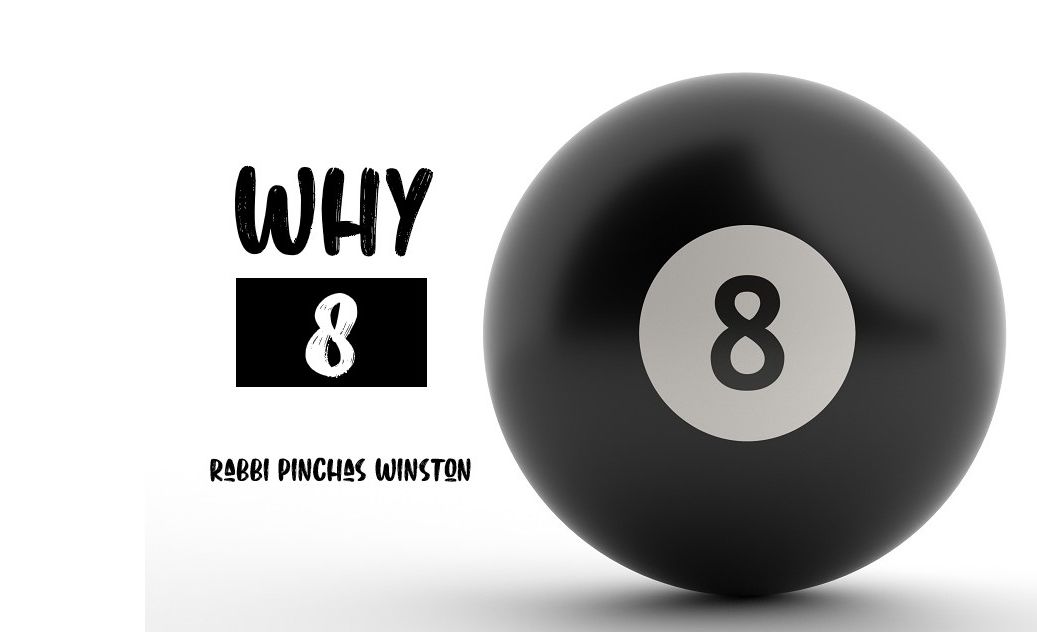


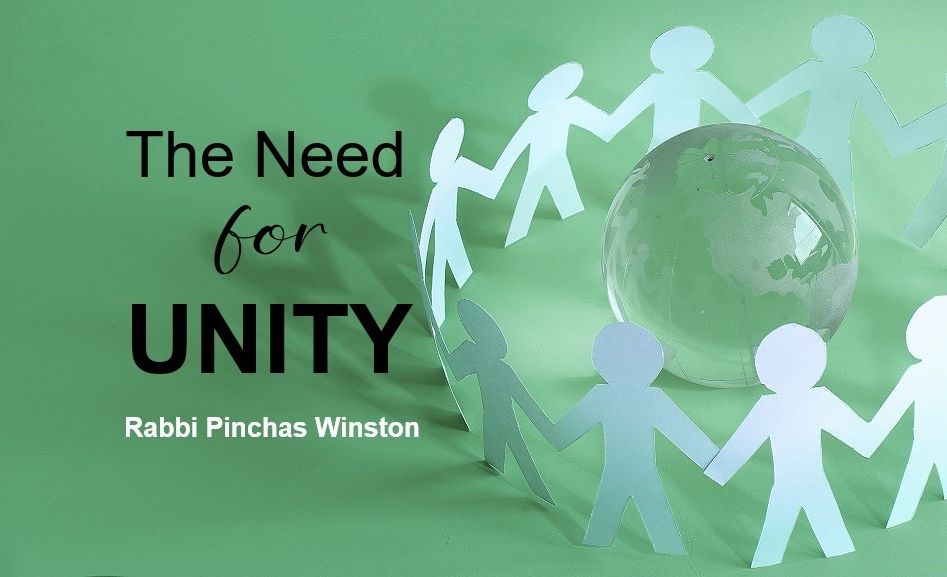
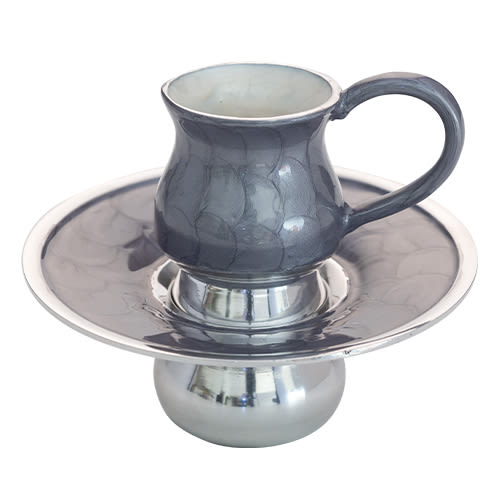
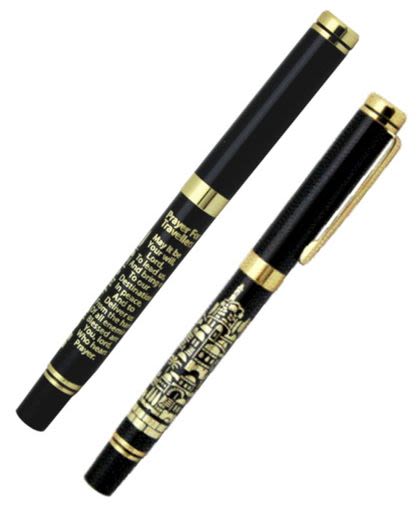

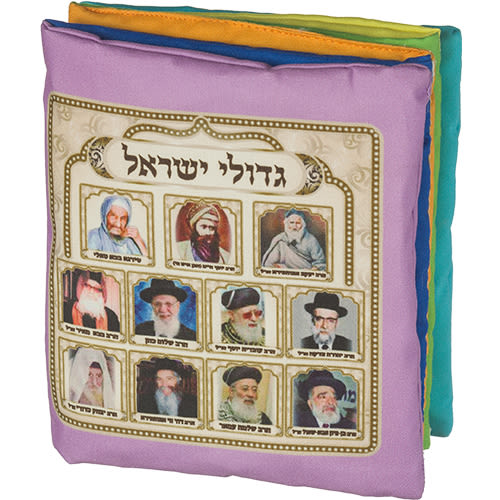

Tell us what you think!
Thank you for your comment!
It will be published after approval by the Editor.